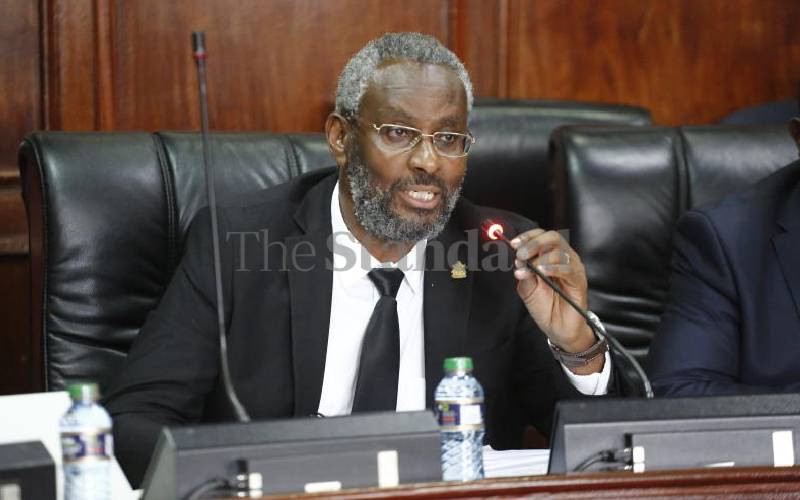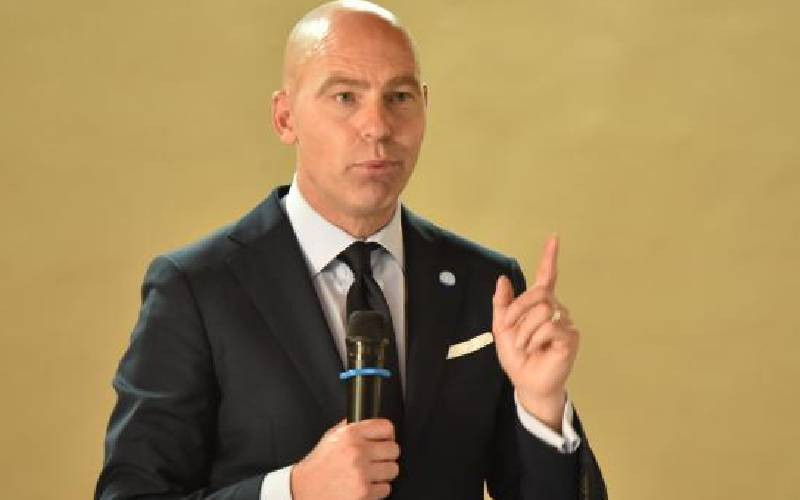
NAIROBI: Apart from going from 0 to 99 Kph in five seconds flat, the VW Sport Coupe GTE Concept car has a navigation system that reads a driver’s emotions.
This means that if you are leaving the office after a stressful day, the car, which was unveiled last month, will give you alternative routes that have less traffic, giving you a more pleasant drive back to your house.
The car has a turbocharged 3.0-litre engine with electric motors powered by a lithium-ion battery pack — this is more or less the same technology that powers a smartphone.
This information matters because the Government could soon give you back a percentage of your money if you import the VW Sport Coupe GTE, or similar hybrid and electric vehicles.
These are some of the proposals contained in a study by the United Nations and Ministry of Energy.
If the recommendations are implemented, it could lead to the most drastic policy review in Kenya’s vehicle industry since the introduction of unleaded petrol and the eight-year age limit on imported vehicles.
GLOBAL DRIVE
The study, led by the United Nations Environment Programme (Unep) and the University of Nairobi, was commissioned by the Energy Regulatory Commission (ERC).
It established that Kenya could save billions of shillings each year if the Government provided incentives for the purchase of fuel-efficient vehicles.
Kenya has joined the global drive to reduce carbon dioxide gas emissions, air pollution and respiratory infections by half by the year 2050.
If adopted, the recommendations of the study would see Kenya join the league of more than 30 countries, including the United States, China, Japan, Germany and Britain, that offer incentives of up to 50 per cent of the purchase price for private owners who buy electric or hybrid vehicles.
In 2003, the number of vehicles imported into the country stood at 33,000. By 2012, this number had increased more than 300 per cent to stand at 110,474 units.
Over the same period, the number of motorcycles registered increased nearly three times over, from 51,855 in 2008 to 140,153 in 2011.
The UN projects that going by the current trend of 10-12 per cent growth per annum in vehicle imports, there will be five million vehicles on Kenyan roads by 2030, and 8.7 million by 2050.
Stay informed. Subscribe to our newsletter
However, with about nine in 10 vehicles on Kenyan roads being second hand, of which 67 per cent are aged between seven and eight, and with virtually none being hybrids, Kenya is setting itself up for high fuel costs and future respiratory pandemics.
“The bulk of Kenya’s carbon dioxide emissions comes from the transport fleet, which is dominated by second-hand vehicles,” said Rob de Jong, the head of Unep’s transport unit in Nairobi.
“The respiratory illnesses we have are mainly found in the urban areas, so we need to make these vehicles much more efficient and much cleaner.”
PUMP PRICES
The study also found that 35 per cent of registered vehicles in the country had between 1,500 to 2,000cc engine capacity, followed by 19 per cent above 2,500cc, and 7 per cent below 1,300cc.
Data from the 2014 Economic Survey indicates that in 2012, Kenyans bought 2,234,700 tonnes of petroleum fuels valued at Sh330 billion, going by average retail pump prices.
At the same time, in 2012 alone, vehicle emissions hit an estimated 717,000 tonnes of carbon dioxide, valued at Sh609 million; money that literally went up in smoke.
This makes up part of the cash the Government intends to save each year through a raft of new import duty policies that favour the importation of hybrid and electric vehicles over traditional, fuel-inefficient vehicles.
“I’m sure you have experienced diesel lorries that emit a lot of smoke that makes it very difficult to see the road, and this tells you how fuel inefficient we are,” said Energy Principal Secretary Joseph Njoroge.
“We are discussing with the Kenya Revenue Authority and we even wanted to make an attempt — although it seems too late for this year’s Budget — to have the Treasury introduce incentives for more fuel-efficient vehicles.”
UPWARD ADJUSTMENTS
The proposal to lower the age limit for second-hand vehicles from eight years to five is also expected to address the number of dilapidated vehicles on the roads.
“There are economic gains to be made on several levels,” said Mr Njoroge.
“First, there will be a lower national fuel bill, which means reduced need to utilise foreign currency on petroleum products, and that makes a big difference in our balance of payments.
“Second, on the individual level, motorists will spend less on their fuel consumption and can channel their savings into other priority areas.”
However, vehicle importers are wary of any upward adjustments in import duty. Already, Kenya has one of the most expensive tax regimes for motor vehicles in the region.
It is currently much cheaper to import vehicles in Uganda and Tanzania than it is in Kenya. Further, the two countries have no restrictions on vehicle age.
“There was an outcry when the Government introduced the eight-year age limit, but the growth rate did not slump,” said Njoroge in defence of the latest policy proposals.
“So if we introduce the five-year limit, there is unlikely to be a slump in the market.”
DOUBLE EFFICIENCY
He added that KRA could reduce the tax on five-year-old vehicles in a new formula that would see importers paying the same amount they would if they were importing an eight-year-old vehicle.
However, a large portion of the revenue generated by KRA is collected from the duty paid by second-hand vehicle importers. And with the Government struggling to fund growing demand for development expenditure, it is unlikely the taxman will want to kill its golden goose.
Unep, however, insists that it is much better to introduce these tax rebates as the country stands to make much higher savings in the long run.
“Our experience as Unep around the world is that if you put in place incentives, you will see a change immediately within the year as consumers buy more efficient vehicles to save on money,” said Mr Jong.
“Many countries have doubled the fuel efficiency of their fleet by introducing incentives to purchase cleaner vehicles, but Kenyan consumers have no incentives and no awareness, hence the persisting trends.”
[email protected]
 The Standard Group Plc is a
multi-media organization with investments in media platforms spanning newspaper
print operations, television, radio broadcasting, digital and online services. The
Standard Group is recognized as a leading multi-media house in Kenya with a key
influence in matters of national and international interest.
The Standard Group Plc is a
multi-media organization with investments in media platforms spanning newspaper
print operations, television, radio broadcasting, digital and online services. The
Standard Group is recognized as a leading multi-media house in Kenya with a key
influence in matters of national and international interest.
 The Standard Group Plc is a
multi-media organization with investments in media platforms spanning newspaper
print operations, television, radio broadcasting, digital and online services. The
Standard Group is recognized as a leading multi-media house in Kenya with a key
influence in matters of national and international interest.
The Standard Group Plc is a
multi-media organization with investments in media platforms spanning newspaper
print operations, television, radio broadcasting, digital and online services. The
Standard Group is recognized as a leading multi-media house in Kenya with a key
influence in matters of national and international interest.









